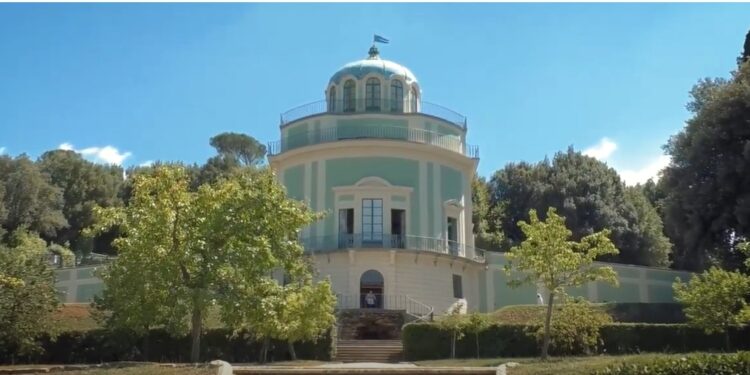Big things are happening for Florence’s magnificent Boboli Gardens which are being restored to all the original beauty of their glorious Medici past.
The first is that Kaffeehaus inside the Boboli Gardens has been reopened to the public. This is one of the most interesting buildings inside the Gardens, one of the works carried out at the wishes of Grand Duke Peter Leopold of Lorraine, between 1774 and 1785.

The new building was a perfect place for the court to take a refreshing break and somewhere to enjoy a drink of hot chocolate or the newly popular coffee, during its walks around the palace grounds. The building is an airy pavilion, circular in shape and with an onion-shaped dome top, and a rare example of Rococo architecture in Tuscany. The 33-hectare grounds behind the Pitti Palace include monumental fountains, frescoed grottos and around 300 classical, renaissance and baroque statues. Some 20 years after it closed, the pavilion now has a Grand-Ducal cafeteria with tables inside and out, restrooms, and a large garden and panoramic terrace overlooking Florence’s skyline. While the restoration won’t be fully completed until October, it reopened in July and is fully accessible.
But this is not all. The restoration of this little gem is part of a much grander €50 million mega-project to restore the Boboli Gardens. It was announced during the August 5th inauguration of the Kaffeehaus by the Director of the Uffizi Galleries, Eike Schmidt.
The “Boboli Masterplan 2030” is an ambitious, eight-year plan to return the formal gardens to their Medici-era splendor. Renovations of the expansive, 33-hectare grounds — located on a slope behind the Pitti Palace in Florence’s Oltrarno neighborhood — are slated for completion in 2030.

The Medici family began the layout and construction of the Boboli Gardens in 1549, commissioning the design to Niccolò Pericoli (also known as Tribolo). After Tribolo’s untimely death, the project was handed over to Bartolomeo Ammannati and Bernardo Buontalenti. A procession of renowned architects followed, all helping to usher in the iconic Italian Renaissance garden style that would go on to define courtly palaces all over Europe. In the latter half of the 18th century, the Boboli Gardens were finally opened to the public.
“The core of ‘Boboli 2030’ project is the enhancement of the Garden’s vast architectural heritage, the restoration and rehabilitation of sculptures and fountains, the improvement of its enjoyment for visitors, the creation of new services, the opening of new spaces, the optimization of water resources, a new lighting and video surveillance system,” according to the Uffizi’s official website
In more good news, Schmidt also announced that the entrances to the Boboli Gardens from Porta Romana and Forte Belvedere would reopen as of July 5, having been closed since 2020. While tourists will still have to pay an entry fee, it will be free access for residents of Florence. Schmidt said, “The possibility of free entry to Boboli even from Forte Belvedere is a novelty that we are happy to be able to guarantee to all Florentines. It will soon prove even more interesting and useful, because the restoration works of the nearby Kaffeehaus inside the garden are now almost completed, and these beautiful spaces will reopen with new services and a new café”.
Entrance will be available from the three entrances of Forte Belvedere, Annalena and Porta Romana, as was the case since the 1990s.












